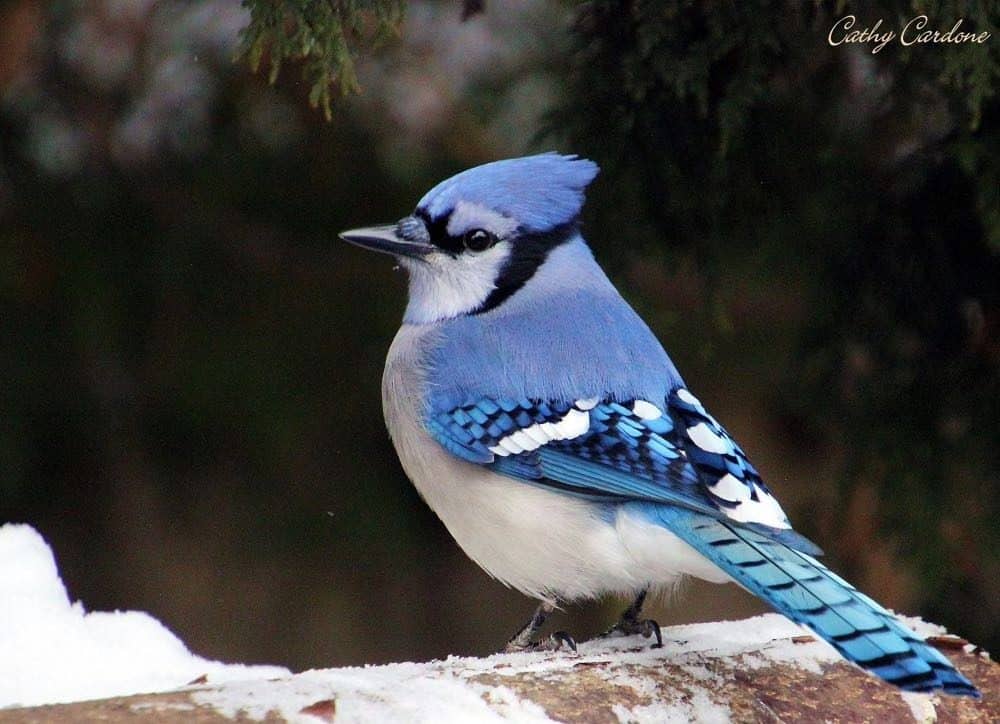Who wouldn’t want to attract Blue Jays to their backyard? Imagine seeing a Blue Jay with its vibrant array of blue coloring, prominent crown, and confident presence. It takes your breath away. Good news! This large songbird can easily be attracted to backyards across the eastern and midwestern US and southern parts of Canada.
As a 25+ years veteran of backyard birding, I’ve easily attracted hundreds of Blue Jays to my yard. In this article, I share my secret tips so you too can enjoy Blue Jays in your yard.
Here are the 7 proven ways to attract Blue Jays to your yard:
- Offer their favorite foods
- Use a Blue-Jay-friendly feeder
- Have water available
- Plant fruit-bearing shrubs
- Plant nut-bearing trees
- Go organic
- Keep kitty inside
I’ll go into more detail about how to attract them but first I’d like to share where they live, what they look like, their habitat, sounds, diet, mating, and nesting habits.
If you’re in a hurry, feel free to skip ahead to the details around my proven ways to attract Blue Jays.
Where Blue Jays Live
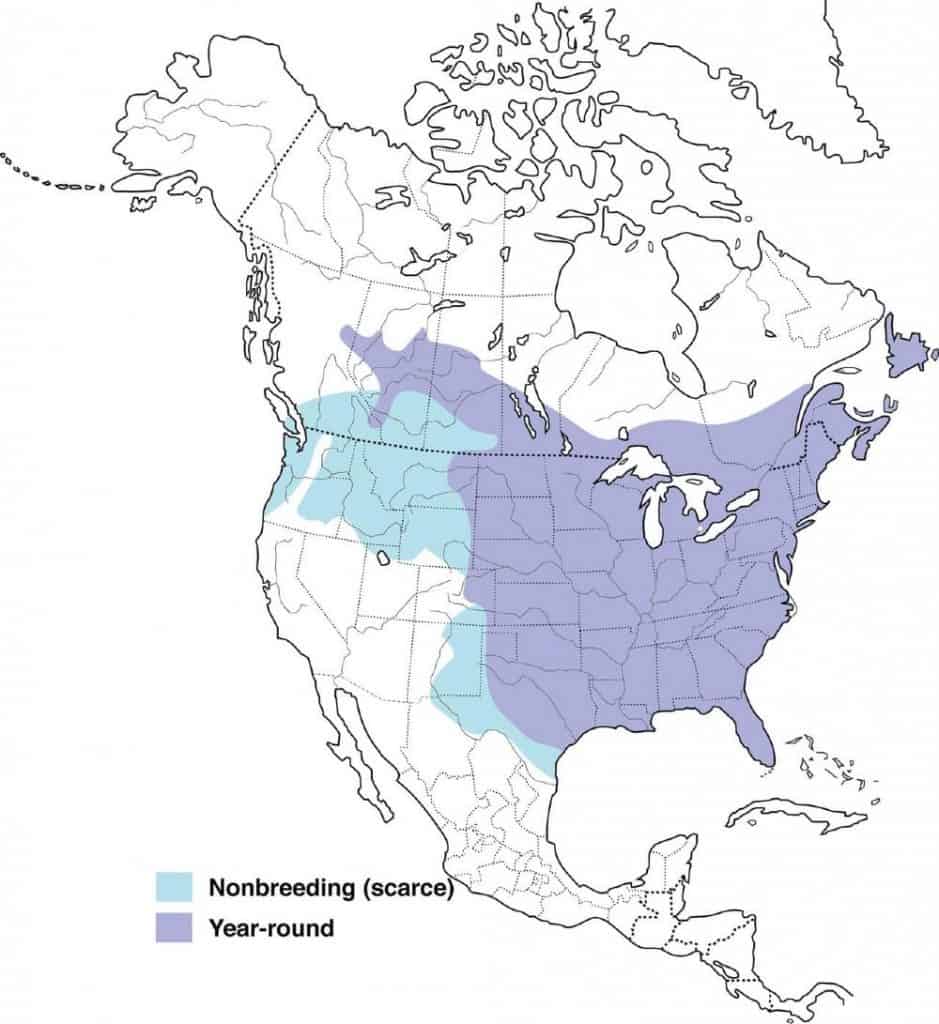
Blue Jays live in the midwestern to eastern parts of the US as well as southern parts of Canada. Some Blue Jays in the more northern part of their range will migrate to the southern parts of the range during winter. Overall, most of them stay put and do not migrate.
The Cornell Lab of Ornithology tells us there doesn’t appear to be a migration pattern. For example, one year a Blue Jay may migrate south but the same bird will not migrate the next year.
Appearance
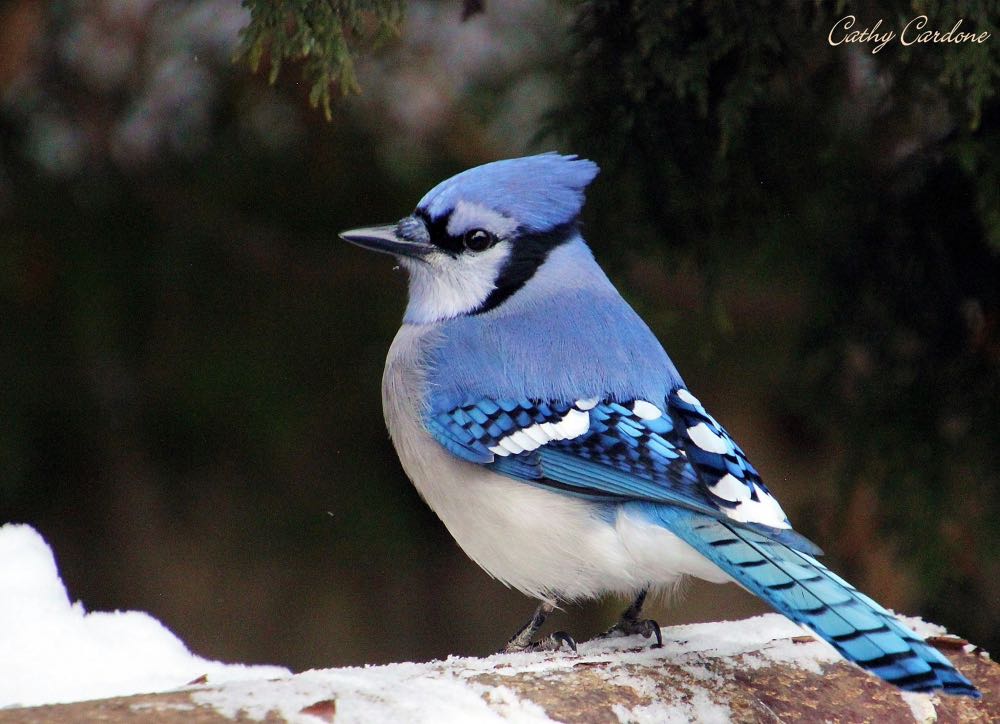
Blue Jays are very large for a songbird at about 11″ in length. Their coloring is striking. They have bright blue underparts, crest, wings, and tails with a white belly and wing bars. Their throat contains a black band.
Male and female Blue Jays are nearly identical in size and color.
Habitat
Blue Jays are common and make a variety of wooded type areas their home. They’re particularly fond of woodland areas with oak trees so if that describes your yard, your yard is probably already inviting to Blue Jays.
Over the years, bird feeding has made them a familiar fixture in both urban and suburban areas.
Diet & Feeding Behavior
Blue Jays are equipped with a versatile beak that enables them to eat a variety of food including.
What do blue jays eat?
In the wild, Blue Jays eat a variety of foods including:
- Acorns & other nuts
- Fruits
- Seeds
- Grains
- Insects (especially caterpillars, beetles, and grasshoppers)
- Spiders
- Snails
- Bird eggs and nestlings (thankfully this is infrequent)
- Small rodents
- Frogs
They will eat in the trees or on the ground and are one of many species of wild birds that cache acorns and other seeds to retrieve later.
They are common at the feeders especially if you’re offering their favorites: whole peanuts, sunflower seeds, and cracked corn.
Sounds
Many people report having heard a Blue Jay before seeing it. It’s true, they are loud and boisterous birds.
In addition to their own song and call, Blue Jays have been known to mimic other birds. The most popular imitation is that of a hawk. It’s thought the Blue Jay cries out the hawk’s sounds as a warning to other birds in the area. (Yet another reason I personally want to attract Blue Jays to my yard!)
Below are some samples of their sounds followed by a video compilation of Blue Jays being noisy in their natural habitat.
Blue Jay (Whisper) Song
Blue Jay Call
Mating, Nesting, Eggs, Nestlings, and Fledglings
Blue Jays’ mating season is from spring to early summer and they often mate for life.
Both males and females work together to build the bowl-shaped nest about 5 – 50″ up within the inner branches of a deciduous tree.
They use twigs, bark, and other plant matter to create the structure and sometimes use mud to cement the nest. Softer human-made materials will also be used to create a soft interior.
The pair can have 1-2 broods per breeding season but only one brood is typical. During that time, the female lays between 2-7 bluish, olive green, or light brown spotted eggs and incubates them for about 17-18 days.
I couldn’t resist sharing this amazing video of baby Blue Jays!
How to Attract Blue Jays to Your Yard
If you live within the range of Blue Jays you have a good chance of spotting one as they are fairly common. They’re more likely to visit your yard if it offers elements of their natural habitat and food preferences.
This bird is known to be a bully at the feeder so don’t be surprised if the other songbirds skedaddle when the Blue Jay is there.
1. Attract Blue Jays by Offering Their Favorite Feeder Foods
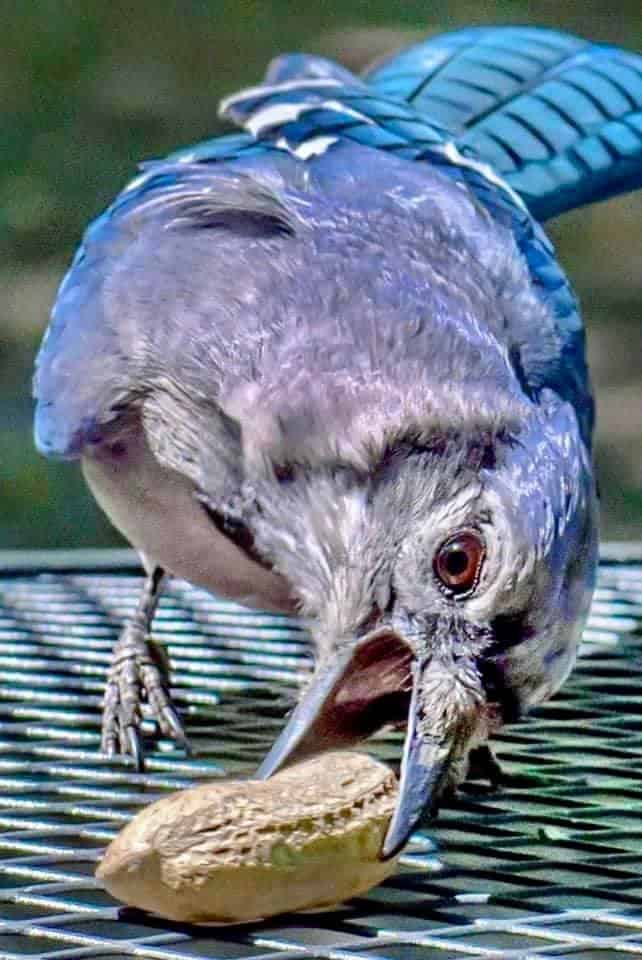
Blue Jays are one of few songbird species equipped with a beak that allows them to eat whole peanuts in the shell. Offer this tasty treat at your feeder and you’ll attract Blue Jays fast!
They’re not choosy birds either.
Below are several bird seeds that attract Blue Jays to your feeder:
- Whole peanuts
- Shelled peanuts
- Peanut Hearts
- Sunflower seeds (in the shell, hulled, or sunflower hearts)
- Black-oil sunflower seeds
- Safflower seed
- Mealworms
- Suet
- Cracked corn
- Millet
- Milo
One of the best parts about attracting Blue Jays is that they’re one of few species that can eat sunflower seeds. I love this because I can attract these blue beauties while deterring pesky birds like house sparrows don’t prefer eating them. (That’s a win in my book!)
2. Attract Blue Jays by Using a Blue Jay Feeder
It’s no secret Blue Jays are large birds. Standard style feeders like tube feeders or other novelty feeders like the one below, don’t provide enough space for this large bird to perch on.
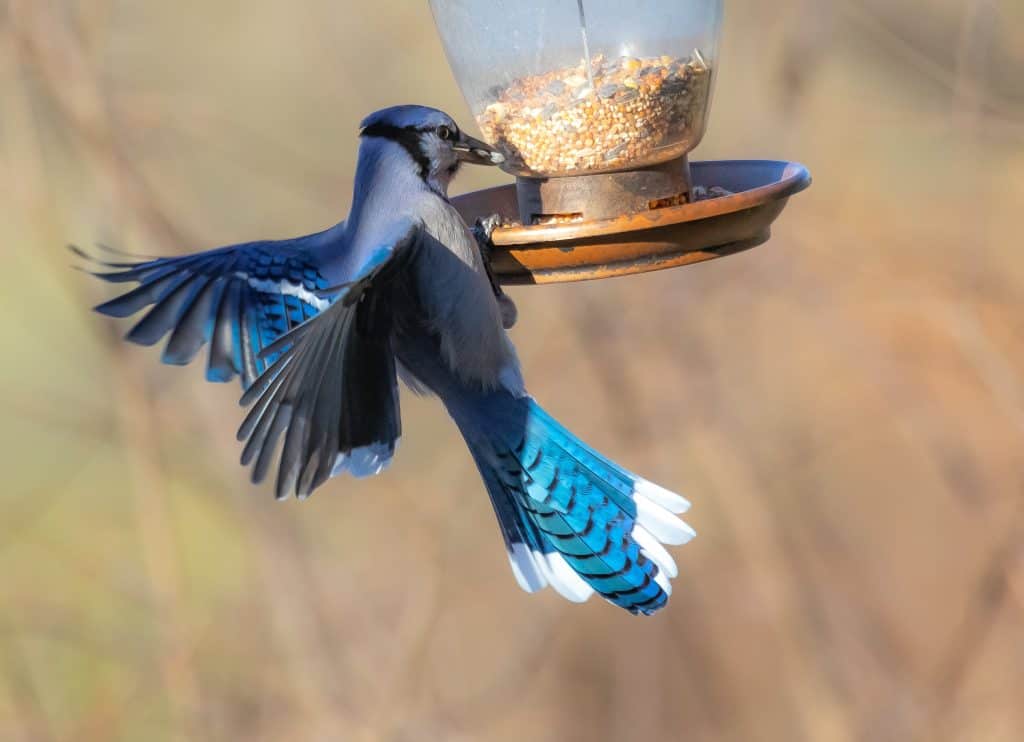
Offer a feeder that doesn’t easily swing and move around to attract Blue Jays to your yard. Platform feeders make the perfect Blue Jay feeder because they offer a large perching area, can accommodate all of their favorite foods, and is less susceptible to large swinging movements.
And if you want to attract cardinals and blue jays, a platform feeder is especially ideal because you can offer a variety of foods in it and it accommodates both larger-sized birds.
The platform feeder I used in the video above is a Woodlink (affiliate).
3. Attract Blue Jays by Having Fresh Water Available
You can attract Blue Jays to your yard with fresh water. All birds need water to drink and bathe in, Blue Jays are no different. If a natural source of water is not available nearby consider installing a pond – even a small patio pond will attract wild birds.
A birdbath is another viable option. In fact, this should really be tip #1. You can attract Blue Jays to your yard if you do nothing else but offer a birdbath.
I love this video of a Blue Jay having a good ‘ole time in the birdbath.
Also, birds are drawn to moving water so adding a fountain to the birdbath could increase your chances of attracting one.
Since many Blue Jays remain in their year-round range all months of the year, including the northern states, having a heated birdbath or birdbath deicer is essential to attract them in winter.
4. Attract Blue Jays by Planting Berry-bearing shrubs
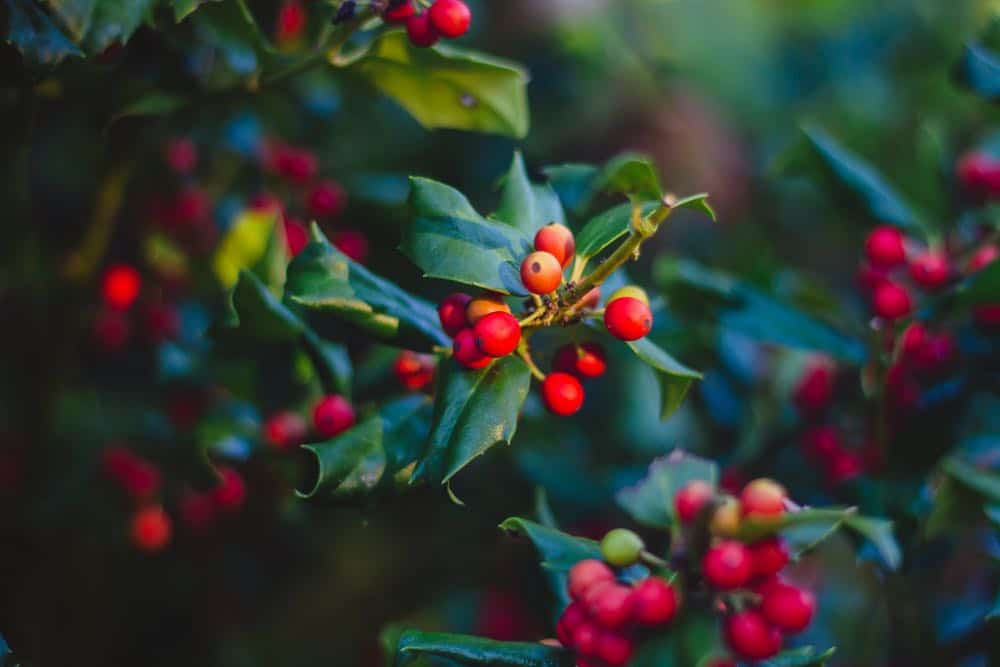
Although it’s not something you can offer immediately, planting fruit trees and shrubs in and around your yard will pique the interest of a nearby Blue Jays and effortlessly provide food year after year. After all, one of their favorite foods is fruit.
Try planting some of these fruit-bearing plants:
- Sumac
- Holly
- Viburnums
5. Attract Blue Jays by Planting Nut-Bearing Trees
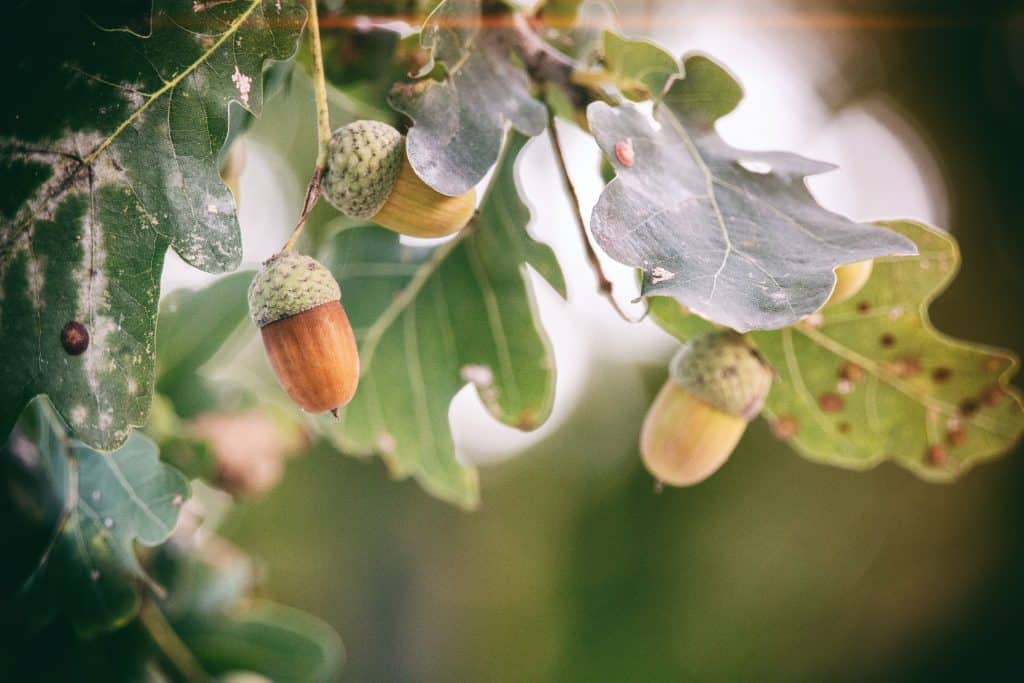
While you’re planting the fruit-bearing shrubs above, why not dig a few extra holes for trees that Blue Jays really like? They love nut-bearing trees – any and all kinds of nuts.
Try planting an oak tree, hazelnut tree, or any other type of nut-bearing tree.
6. Attract Blue Jays by Going Organic
Avoid using chemicals in and around your yards such as grass fertilizer and pesticides. Wild birds, including Blue Jays, include insects in their diet – especially during nesting time. Killing off the insects could result in fewer offspring.
Equally horrible would be death by poisoning in the case of a wild bird eating a toxic insect!
7. Attract Blue Jays by Keeping Kitty Inside

A primary predator of birds everywhere is cats – domestic cats. This includes feral cats that can roam a neighborhood.
If you want to attract Blue Jays to your yard, you must rein in the cats.
According to a study published in Nature Communications, each year almost 4 billion wild birds lose their lives to outdoor cats. Not only does this rock the ecology it makes your yard unappealing and dangerous for many forms of wildlife.
If it’s your cat, keep it inside. Don’t be fooled. Even the nicest and sweetest of kitties have the natural instinct to hunt birds. It’s not their fault.
If it’s a feral cat implement a non-toxic deterrent method such as scattered fresh orange or lemon peels in the area.
If you’re really gung ho, consider trapping the feral feline and taking it to a human society that offers free neutering/spaying. This may prevent the next person from having to deal with a feral cat at their feeder.
Next Steps
I think you’ll agree attracting Blue Jays will add variety and beauty to your yard!
Take and apply some of the tips I provided or if you’re really serious about attracting them to your yard – apply all of them! Good luck and happy birding!

